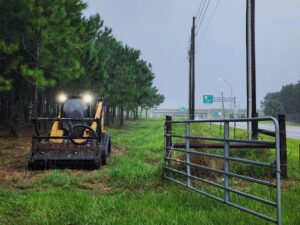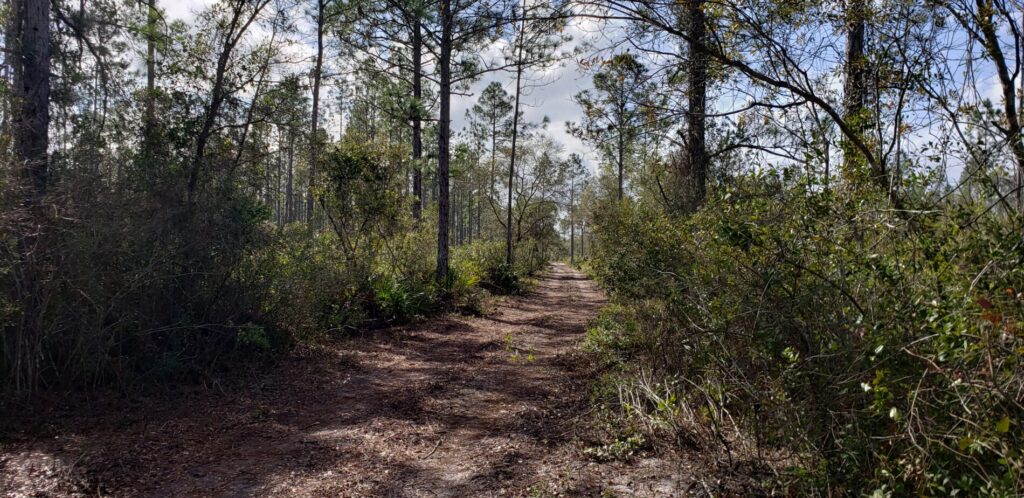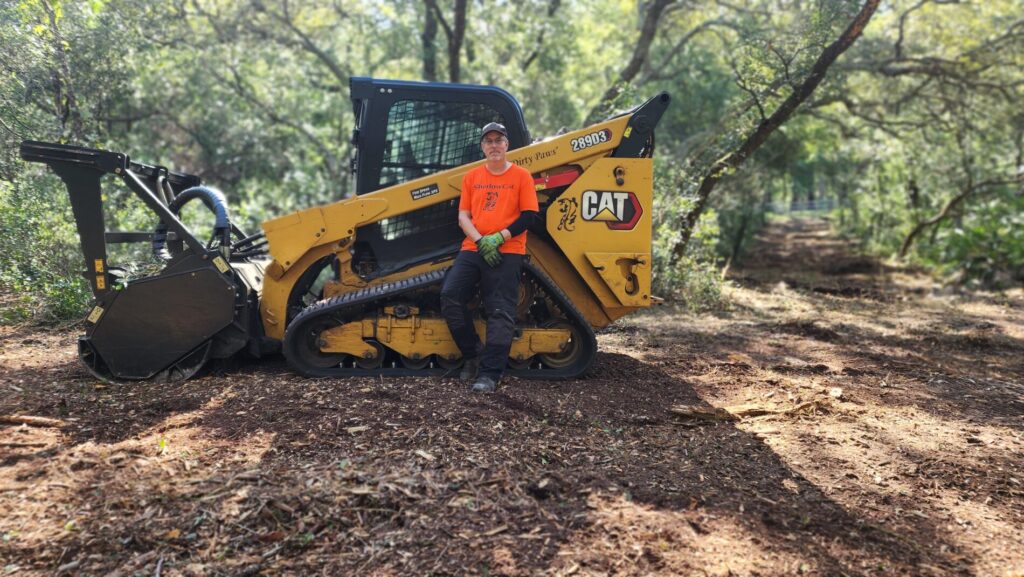
Florida is a rapidly growing state, and with that growth there is a need for more space for homes and businesses. We often get land-clearing requests from property owners and potential property owners that are looking to develop a vacant property for the first time. More often than not, they are unaware of the best order for the clearing process. In this blog post, we want to share what we consider the Best Practices for developing vacant property that so many of our customers have been very thankful to be told.
One of the reasons we get so many inquiries about clearing vacant properties, is because clearing space on a vacant property is one of the first things a property owner needs to do in order to prepare the property for a homestead or commercial building. Ideally, we would be the first clearing service on your property. Clearing the overgrowth (such as brush and small trees) to make the property walkable and safe for both the owner and all contractors to follow. On a typical wooded-Florida property, we will open up 75 to 85% of the lot by clearing the overgrowth and small trees. By contrast, fully clearing a site of the overgrowth and mature trees at the very beginning of the process can lead to unexpected issues that cost both time and money.
Many of Florida’s municipalities discourage removing mature trees from undeveloped residential properties by having restrictive codes which can end up costing the property owner code violation fines.
To take out/down a mature tree on a residential property requires an Arbor Permit. In most cases tree(s) can be removed on a vacant property under an arbor permit for the following reasons:
- Tree is diseased and threatens to infest other vegetation.
- The tree is injured or in danger of falling on pedestrians, vehicular traffic or in such proximity to existing or proposed structures so as to endanger such structures.
- The tree interferes with utility services.
- The tree is located in a buildable area, yard area or right-of-way where a structure or improvement is to be placed and for which a permit application has been filed, and/or it unreasonably restricts the permitted use of the property.
The first three items above normally requires the property owner to replace the removed mature tree(s) with other trees of a certain size and species. Size is measured as diameter at breast height (DBH). The issuing municipality will provide a list of trees, quantity, and sizes that will need to be planted to replace the tree(s). The State of Florida defines a mature tree as 6” DBH; however, each municipality is different. In our service area, there are cities that consider 3” DBH a mature tree and others that follow the State of Florida’s 6” DBH definition. It is important to check your municipality for their definition and restrictions. Note that any potential contractor that you may hire will not get the fine (regardless of what they may say). It is always the property owner’s responsibility to know the codes and restrictions and it is the property owner that will be levied the violation and fine.
SHADOWCAT’S BEST PRACTICES FOR LAND-CLEARING VACANT PROPERTY
The Rules:
The first step to any development process is to understand what is and is not allowed by your governing municipality. Items to discuss with them would be applicable surveys, DBH regulation for mature trees, wetlands, and protected species of animals/vegetation.
Clear for Access:
Second step, ShadowCat will clear all overgrowth and small trees from property. Clearing the clutterfrom the site will allow the owners, architect, builder, and other contractors to safely walk or drive on the property. The property owner can expect not only ease of access, but that other contractors will consider the conditions of the property and price accordingly for their service. These savings add up when you have the site safely accessible at the beginning.
Surveys:
Next, check with your municipality to find out what surveys are require for the property’s development (if you have not already done so already). Often surveys such as the Turtle/Environmental survey are needed before a site plan application can be completed and approved. Boundary surveys are often done upon purchase of the land. Generally, a Topographical survey which illustrates surface features and elevations on the site will be required. Also check to see if your property has a Wetland or Wetland easement – read more about this at Wetlands or just Wet Land section of a previous blog post.
Site Permit:
Fourth is the paperwork. Once you have your initial clearing, surveys completed, and home designed and mapped to be placed on the property, your builder will submit your Site Plan application. Once approved, you will be allowed to take down any mature trees within the footprint of the home and driveway (and a designated perimeter around both). An important distinction is that this permit does not require the owner to replace the removed trees.
What type of clearing service do you need for the building site? ShadowCat recommends using a licensed/insured Site Prep company for this work.
Site Prep:
Construction is the last step and it begins with site preparation. This is a multistep process that includes root raking, grading, compacting and drainage, and often times the pouring of your foundation. While ShadowCat provide root raking services, we strongly recommend using a single company for your site prep work. On the off chance that there is an issue with the foundation, you will be thankful to have one company that is responsible. Any place that concrete is being poured must be root raked to prevent decaying voids cracking of the concrete/foundation.
Once the property is cleared of overgrowth, surveyed, then prepped – the building of the structure(s) begins!

By choosing ShadowCat Services for your land-clearing needs, you are supporting a family-owned and operated local small business that is dedicated to clearing responsibly.







